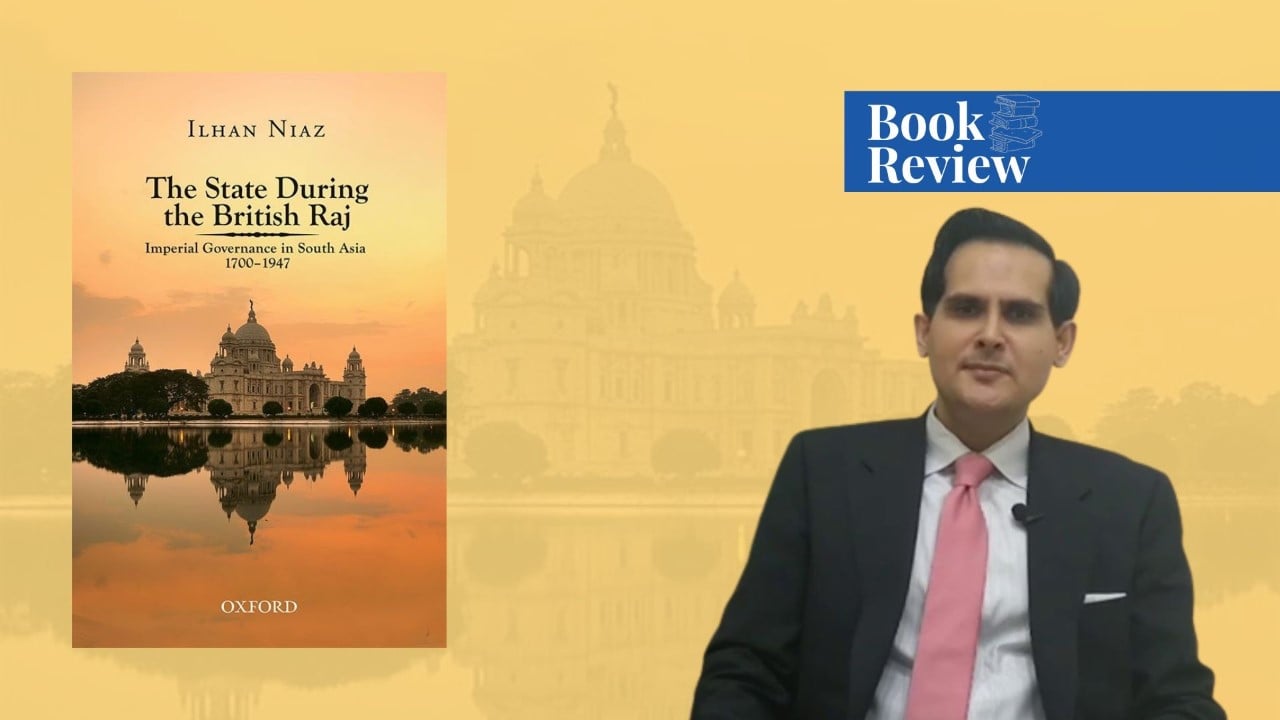Introduction
Toynbee elucidated the decay of the civilization because of challenge and response, asserting that when the empires fail to respond shrewdly to contain challenges, they see their nemesis. It was posited by Toynbee that when an empire fails to respond to the challenges, it would be overthrown by a violent military takeover or by a movement based on utopian claims referred to as ‘schism in the soul’.
In The State During British Raj: Imperial Governance in South Asia 1700-1947, Dr Ilhan Niaz uses Toynbee’s concept to explain the challenges by the Timurids and the British as well as the responses they made to those challenges. Although with the gradual demise of the Timurids, no utopian movement came to replace them, its proponents invited alien rulers such as Shah Waliullah’s invitation to Nadir Shah, which set the stage for the rise of the trading company’s takeover of the Timurids administration.
The British Raj not only stabilized the whole Indian dominion under central authority but also founded the impersonalized institutional and representative framework never to be seen in Indian history. The State During British Raj shatters the myths of pre-British utopianism of empires and presents a meek but incisive criticism of the scholarship of both successor states which seems at all agog to demonize the British Raj without trying to investigate the institutional build-up of the British Empire in India.
The British Empire’s Institutional Structure
The British Empire laid the foundation of constitutionalism, civilian supremacy, meritocracy, and representative institution via which Indians demanded more and more representation. In its introduction, The State During British Raj laments the scholarship of South Asia which is at all agog to demonize the British Raj as ‘alien’ and ‘colonial’.
The book also criticizes the approaches that are centered on the nationalistic struggle for independence due to a lack of curiosity on part of these scholars to divulge the institutional developments by the British which both the successor states are benefiting from, though with certain modifications.
Although the representative system was alien to Indian culture, which was highly diversified into castes, Voltaire’s coconuts’ experience of implanting the British system to its colonies provided lower Indian castes with one vote, giving them parity with other compatriots. It should also be noted that it was this representative system that paved the way for independence as the author aptly put ‘…Macaulay’s children proved unruly adolescents and demanded self-government along the lines of what prevailed in Britain’.
It would not be wrong to mention that it was this representative system via which Pakistan was won by Muslim League. Ilhan Niaz aptly and eruditely proves the gradual evolution and development of the institutional framework in Indian conditions, with most of the British administrative framework being a modification of Timurids’ such as management of law and order that was administered by faujdars or shiqdars.
However, the advancement of constitutionalism, civilian supremacy and meritocracy can only be credited to the British because previously most of the appointments were made on personal loyalty and patronage. The introduction and development of the police as an independent institution was a distinct feature of the British Raj to maintain law and order.
As noted above, the recruitment and appointments in pre-British empires were founded on patronage based on loyalty to the ruler and the recruits were personal servants of the ruler, while the empire was the personal state of the ruler. The British advanced the concept of meritocracy—the selection of recruits based on open competition which was also seconded by Jinnah—was a leap forward towards transparent recruitment for bureaucratic administration.
The governor was subjected to the constitution which meant that he had to act under the restraints of the constitution, preventing the ruling elite from corruption and plundering because they could be subjected to the trial too.
Civilian Supremacy
The State During British Raj emphasizes that the rise of civilian supremacy was a vital phenomenon in the Indian precinct because, in most of Indian history, empires were built around military patronage and a sturdy ruler could only manage to control the empire. When powerful Timurids died, successors were not powerful enough to control the military and the empire started crippling.
The British Raj made the military subordinate to civilians, and this was the consequence of civilian supremacy at home in Britain. The rise of representation in the Indian context was gradually modified along the British lines where representation was based on land ownership, but in the Indian subcontinent, the ruler was virtually the owner of all the land.
After the introduction of permanent settlement and private property in India, it moved toward the representative system because this representative system led to competition between different classes, demanding representation to protect their interests.
Ilhan Niaz posits that it was in this context that the constitution started emerging, the provenance of which goes back to the 1773 Regulating Act of the company. The subject of the British Raj’s governance is not an intriguing subject to moot for the insular scholars of the sub-continent, but this book is an interesting feat towards the objective analysis of institutional development during the British Raj.
In a nutshell, this book is a must-read for the policymakers and upper echelons of both the successor states to understand the institutionalization of the British Raj so that they can understand and modify the developments that are taking place in the contemporary period.
If you want to submit your articles and/or research papers, please check the Submissions page.
The views and opinions expressed in this article/paper are the author’s own and do not necessarily reflect the editorial position of Paradigm Shift.



















